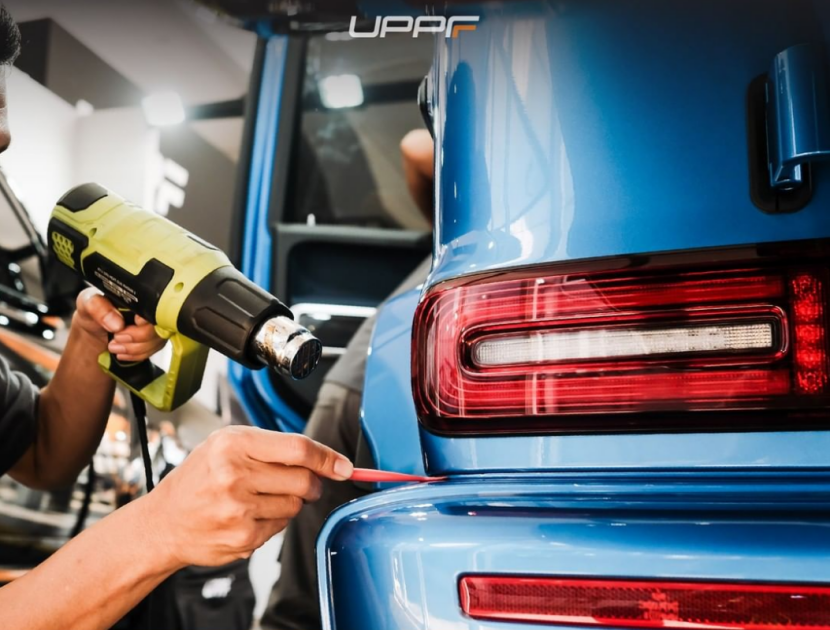Keeping your car's paint looking showroom-fresh is a battle against scratches, UV rays, bird droppings, and road grime. Two heavyweights dominate the paint protection arena: Paint Protection Film (PPF) and Ceramic Coating. But which one wins for your ride? Let's break it down.
Paint Protection Film (PPF): The Invisible Armor
What it is: A thin, transparent, thermoplastic urethane film applied directly to painted surfaces (like a high-tech sticker).
Superpower: Physical Protection. PPF's #1 job is to absorb impacts. It's incredibly effective against:
Rock chips & road debris
Minor scratches & swirl marks
Scuffs from light contact
Bug splatter etching
Self-Healing: Many modern PPFs have self-healing properties – minor scratches disappear with heat (sun or warm water).
Durability: Lasts 5-10+ years with proper care. The ultimate long-term shield.
Cost: Higher upfront investment (often $2k: for partial - $8k+ for full car
Look: Can have a glossy or matte finish. Adds a very slight "orange peel" texture (less noticeable on high-end films).

Ceramic Coating: The Liquid Force Field
What it is: A liquid polymer chemically bonded to your car's factory paint.
Superpower: Chemical Protection & Hydrophobicity. Ceramic creates an ultra-slick, sacrificial layer:
Repels water, dirt, mud, and grime dramatically (beading/sheeting effect).
Resists UV oxidation, keeping paint vibrant longer.
Makes cleaning MUCH easier.
Adds intense gloss and depth.
Durability: Lasts 1-2 years (depending on product quality and maintenance).
Cost: Lower upfront cost than full PPF (often $1k-$3k for professional application).
Look: Enhances gloss significantly. Gives paint a "wet" look.
Key Differences: Head-to-Head
| Feature | PPF (Paint Protection Film) | Ceramic Coating |
|---|---|---|
| Core Benefit | Physical impact resistance | Chemical resistance & ease of cleaning |
| Protects Against | Rock chips, scratches, scuffs | UV fade, stains, oxidation, bird droppings, dirt |
| Hydrophobicity | Good (improves with top coats) | Excellent (Extreme beading/sheeting) |
| Durability | Longer (5-10+ years) | Shorter (1-2 years) |
| Cost | Higher | Lower |
| Self-Healing | Yes (most modern films) | No |
| Appearance | Slight texture, gloss/matte, Color | High Gloss |
| Best For | Preserving paint from physical damage | Enhancing gloss, reducing maintenance, fighting contaminants |
The Verdict: It's About Priorities
Choose PPF if: Your top priority is preventing rock chips, scratches, and physical damage. You drive frequently on highways, gravel roads, or park in high-risk areas. You want the most durable physical barrier and are willing to invest.
Choose Ceramic Coating if: You want stunning gloss, easier washing, and strong protection against environmental contaminants (UV, bird bombs, tree sap). Your main concerns are shine, maintenance reduction, and chemical resistance. Budget is a significant factor.
The Hybrid Approach: Best of Both Worlds?
Many enthusiasts (and pros) recommend both! Apply PPF to high-impact zones (front bumper, hood, fenders, mirrors) for physical protection, then coat the entire car (including the PPF) with ceramic for unbeatable gloss, hydrophobicity, and chemical resistance. This maximizes protection and aesthetics.
Ultimately: PPF is your "suit of armor" against physical threats. Ceramic Coating is your "force field" against chemicals and dirt, plus your ultimate shine booster. Decide what you value most, or consider combining them for ultimate car paint nirvana!
Check UPPF Paint Protection Film Product for more detail

